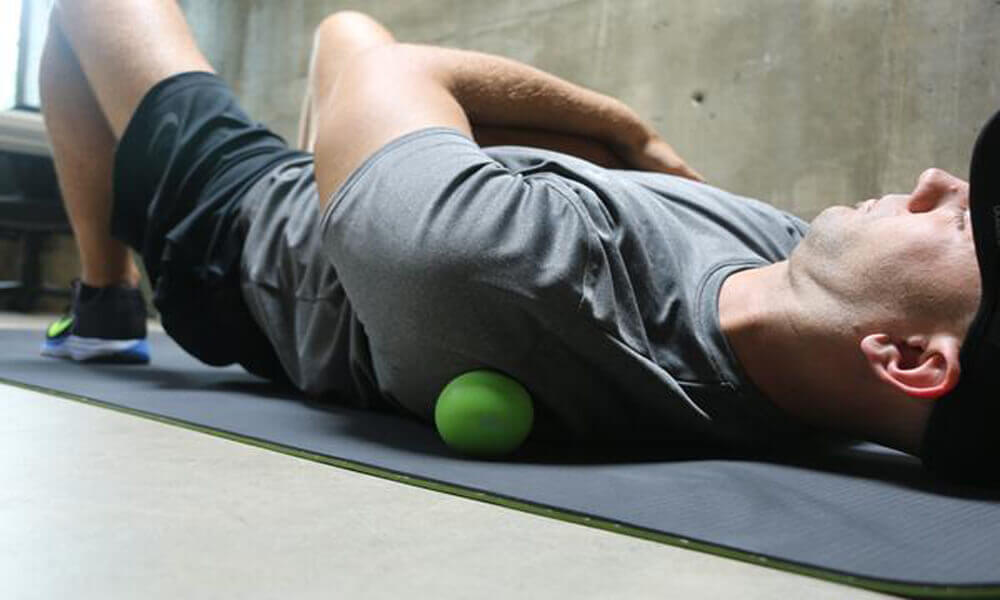Unlike tennis balls, lacrosse balls are hard and dense. They don’t soften under pressure. Lacrosse balls can be used as a powerful massage device that can help relieve pain and improve function in sore muscles.
A review published in the International Journal of Sports Physical Therapy found that self-myofascial release may:
increase joint range of motion
help muscle performance
decrease fatigue after exercise
decrease soreness after exercise
Self-myofascial release is best after a workout, but you can also do it whenever you remember throughout the day. It only takes a few minutes. Just like stretching, the best results are seen after consistent practice.
Massage balls really are very special and have unique benefits.
In spite of all the marketing gimmicks, massage balls are far more effective at isolating problem areas in your body and enabling you to make permanent changes that increase your flexibility and eliminate pain. They allow you to do your own deep tissue massage approximating the pressure you could expect from a massage therapist’s palm or elbow.
Top physical therapists, massage therapists and athletes all use massage balls for their own self-care and most use lacrosse balls for massage.
Massage balls are so effective they can even prevent risky surgeries. I don’t want to over dramatize this but it’s a known fact that back surgeries sometimes result in death or a lifetime of debilitating pain.
How to choose between massage ball options
What matters most is your ability to position a massage ball and control the movement to apply pressure on specific body parts. The factors that determine whether you’ve got the right massage ball for your need are size, weight, shape, grip and hardness. Let’s go over them one at a time.
Size – you want to select the size based on the body part you’re working.
Hands, forearms or feet – you’ll want to try golf ball and lacrosse ball sizes. For the technically minded, the golf ball has a diameter of 42.7 mm and the lacrosse ball’s diameter is 63 mm
Calves, hamstrings, abdomen/psoas, buttocks, upper and lower back, deltoids and neck – the lacrosse ball, tennis ball and baseball sizes work best for these body parts. Their diameters respectively are 63 mm, 67 mm and 73mm.
Weight – the heavier the ball the more likely it is to stay where you put it. We manufacture all of our massage balls with the maximum weight possible for this reason even though it increases the cost significantly. So, solid balls are preferable to hollow or inflatable because of their greater weight. The solid balls also deform more predictably when you put your weight on them.
Shape – it’s important to use a smooth round ball so you can control its movement precisely when you roll on it. I’ve seen marketing pictures of people holding a massage ball in their hand and pressing it on their body which is pure fantasy. If you’re not using your body weight to apply pressure on the massage ball, you’re wasting your time. So forget about spikes and bumps on the ball — as cool and interesting as they look, they’re just gimmicks. The one possible exception – if you’re sweaty from a workout, small bumps might improve the grip.
Some may say you need protrusions to dig into a tweaked muscle or tendon but, all of my tweaks and injuries have always been resolved easily with smooth round balls. In addition to getting better control over the movement with a smooth ball, you can also cover more territory faster and more easily.
Grip – a great massage ball has good grip and won’t slide easily against a wood floor, wall or your skin. This makes it easier to control the movement and prevents the ball slipping out from under you or falling if you’re using it against the wall. The tennis ball is a reasonably good massage ball except for its lousy grip – it slides around too easily. The best grip you’ll find comes from the natural rubber used in making lacrosse balls.
Hardness – there is no perfect massage ball hardness as each body part will respond best to a different hardness. Also, as the health and flexibility of your tissues improves, you’ll want to use harder massage balls over time.
Injured tissues will always need softer massage balls. In manufacturing, hardness is measured with an instrument called a durometer typically on the Shore scale. The lacrosse ball, for example, has a Shore C hardness of 60. Our softest massage ball gets measured on a different scale specific for foams and has a hardness of Shore A 40.
It’s worth mentioning that the hardness is not the only characteristic that determines how the ball deforms under your body, as a hollow and solid ball can both have the same hardness, but they will feel different. Hollow balls like hockey balls can work reasonably well and I’ve used them for long periods of time myself even if I now prefer the heavier solid balls we manufacture.
Now that’s the straight dope on massage balls! Look for heavy, smooth, round balls with good grip and get them in a variety of hardnesses and sizes like the ones we offer in our Deep Tissue Massage Ball Set. My favorite is our green 63.5 mm FIRM ball.

